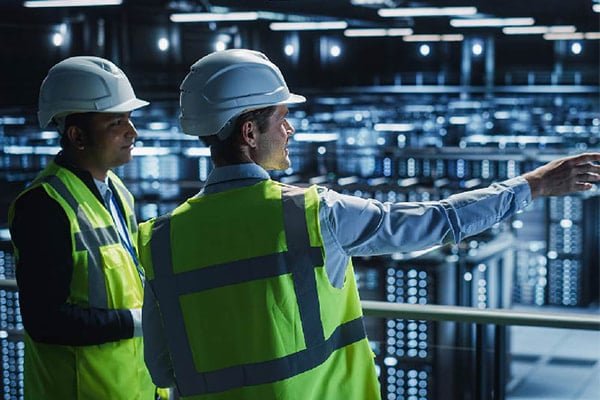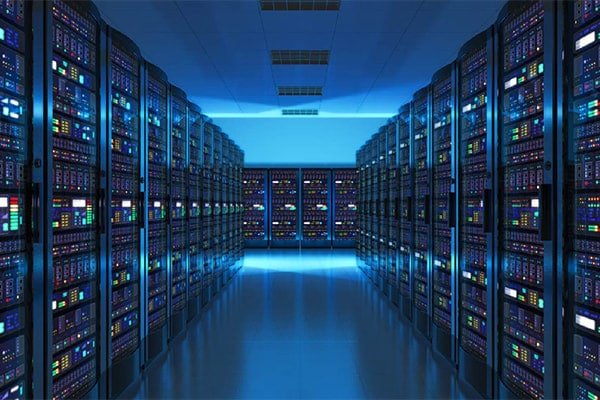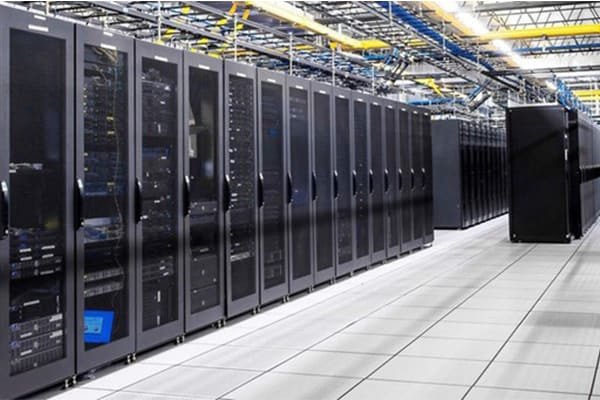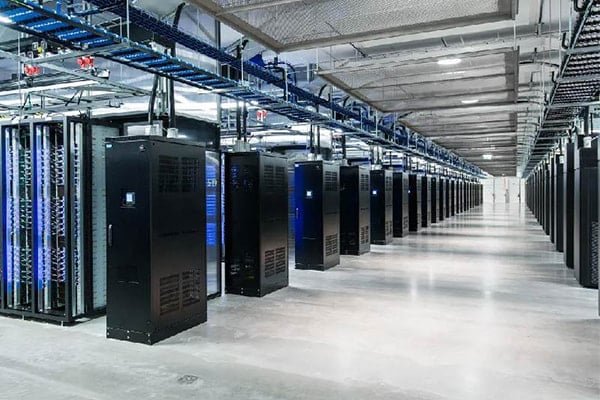The concept of a data center cabling first emerged in the early 1940s when computer hard drives presented various operational and maintenance challenges. Early computer systems required numerous components to be connected via multiple cables, consuming large amounts of power and demanding frequent cooling.
To manage these systems, companies often placed all hardware in a single room, known as a data center. Over time, hardware innovations reduced the size and power requirements of computers, but the complexity of IT systems continued to increase.
What is Data Center Cabling?
Data center cabling refers to the infrastructure inside a room, building, or physical facility that houses IT equipment. This infrastructure is used to build, deploy, and distribute applications and services, while also storing and managing the data associated with them. Simply put, a data center is a physical location where computers and related hardware are stored. It contains the computing infrastructure required by IT systems, such as servers, storage drives, and networking equipment. This physical infrastructure stores the digital data of any business.

In recent years, the data center model has expanded significantly. It now ranges from privately controlled enterprises, which host traditional IT infrastructure for exclusive use, to facilities or networks owned by cloud service providers, housing virtualized IT infrastructure that can be shared among multiple customers and partners.
Types of Data Centers
There are several types of data center facilities. A company may use one or more types of data centers simultaneously, depending on its workload and business needs.
Enterprise Data Centers (On-Premises)
In this model, all IT infrastructure and data are stored on-site. Many companies choose to build their own on-premises data centers for greater control over data security. Compliance with regulations, such as the European Union’s General Data Protection Regulation (GDPR) or the U.S. Health Insurance Portability and Accountability Act (HIPAA), can also be easier with this approach. With enterprise data centers, the company is responsible for deploying, monitoring, and managing everything.

Public Cloud Data Centers
Public cloud data centers, often referred to as cloud computing data centers, store IT infrastructure resources for shared use by multiple customers via internet connections. Many cloud data centers are massive—referred to as hyperscale data centers—and are operated by large global cloud providers such as Amazon Web Services (AWS), Google Cloud Platform, IBM Cloud, Microsoft Azure, and Oracle Cloud Infrastructure. In reality, most leading cloud providers operate several hyperscale data centers worldwide.
For tasks requiring heavy data usage, real-time processing, or integration with advanced technologies like big data analytics, artificial intelligence (AI), or content delivery applications, edge data centers can help reduce latency and improve overall performance and customer experience.

Colocation Data Centers
Colocation data centers are managed by third-party providers and are an ideal option for organizations that lack the space, personnel, or expertise to deploy and manage their IT infrastructure. However, businesses might not want to use public cloud infrastructure for storing their IT systems.
In a colocation data center, a company rents dedicated servers, storage hardware, and network connectivity from the provider. The data center provider handles administration, monitoring, and management for the client. In a traditional colocation setup, the client company owns all the infrastructure and rents a dedicated space to house it.
Colocation services are often used for remote data backup and disaster recovery for small and medium-sized businesses (SMBs).
===> Learn more: Summary of Unexpected Applications of Fiber Optics
Data Center Infrastructure Components
Servers
Servers are powerful computers that deliver applications, services, and data to end-user devices. Data center servers come in various forms, such as rack-mounted servers, high-density servers, and mainframes. The choice of server type depends on factors like available space, workload, power availability, and cost.

Storage Systems
Data center storage systems come in two types:
- Block Storage Devices: Block storage devices, like hard drives and solid-state drives, store data in blocks and provide large amounts of data storage capacity. Storage area networks (SANs) are large block storage systems that contain several drives within them.
- File Storage Devices: File storage devices, such as network-attached storage (NAS), can store large amounts of files. Businesses often use them to build repositories of images and videos.
Network
A data center network includes various switches, routers, and fiber optics, guiding network traffic between servers (east/west traffic) and from servers to clients (north/south traffic). As mentioned earlier, data center networks are often virtualized, allowing software-defined overlay networks to be created on top of physical network infrastructure. This enables specific security measures or service level agreements (SLAs) to be applied.

Power and Cable Management
Most servers have dual power supplies. Uninterruptible power supplies (UPS) with batteries protect against voltage spikes and short power outages. Powerful generators can activate during more serious outages. With thousands of servers connected via multiple cables, managing these cables is a primary concern in data center design. Poor cable management can cause crosstalk, which negatively impacts data transmission and signal strength. Additionally, overcrowded cables can generate excessive heat, requiring careful consideration during data center construction and expansion.
Disaster Recovery and Backup
Data center downtime is costly for service providers and their customers. Operators and architects of data centers must maximize system resiliency to handle issues effectively. Disaster recovery measures range from redundant arrays of independent disks (RAID), which protect against data loss in the event of hardware failure, to backup cooling systems ensuring servers remain at optimal temperatures even if primary cooling systems fail. Many large providers operate data centers in geographically diverse locations to avoid disruptions caused by natural disasters or political instability in any one region.
Data centers play a vital role not only for businesses but also for the broader development of society. Many countries are now building national data centers to drive digital transformation. Reach out to NT Security for more information on data center cabling solutions.

